 W
WAlice is a fictional character and protagonist of Lewis Carroll's children's novel Alice's Adventures in Wonderland (1865) and its sequel, Through the Looking-Glass (1871). A child in the mid-Victorian era, Alice unintentionally goes on an underground adventure after accidentally falling down a rabbit hole into Wonderland; in the sequel, she steps through a mirror into an alternative world.
 W
WThe Cowardly Lion also known as Jonathan Stamper which is a character in the fictional Land of Oz created by American author L. Frank Baum. He is an African lion, but he speaks and interacts with humans.
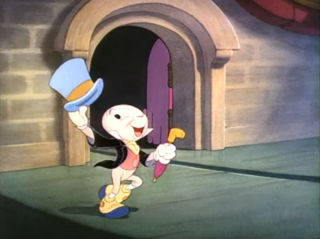 W
WJiminy Cricket, also referred to as J. Cricket, is the Walt Disney version of the "Talking Cricket", a fictional character created by Italian writer Carlo Collodi for his 1883 children's book The Adventures of Pinocchio, which Disney adapted into the animated film Pinocchio in 1940. Originally an unnamed, minor character in Collodi's novel who is killed by Pinocchio before returning as a ghost, he was transformed for the Disney adaptation into a comical and wisecracking partner who accompanies Pinocchio on his adventures, having been appointed by the Blue Fairy to serve as Pinocchio's official conscience. In the film, he sings "When You Wish Upon a Star", widely considered the Walt Disney Company's signature song.
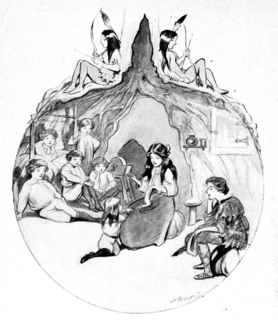 W
WWendy Moira Angela Darling is a fictional character and one of the main protagonists of the 1904 play and 1911 novel Peter and Wendy by J. M. Barrie, as well as in most adaptations in other media. Her exact age is not specified in the original play or novel by Barrie, though it is implied that she is about 12 years old or possibly younger, as she is "just Peter's size". As a girl on the verge of adulthood, she stands in contrast to Peter Pan, a boy who refuses to grow up, the major theme of the Peter Pan stories. Wendy hesitates at first to fly off to Neverland, but she comes to enjoy her adventures. Ultimately, she chooses to go back to her parents and accepts that she has to grow up.
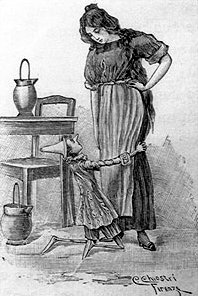 W
WThe Fairy with Turquoise Hair is a fictional character the 1883 Italian book The Adventures of Pinocchio by Carlo Collodi, repeatedly appearing at critical moments in Pinocchio's wanderings to admonish the little wooden puppet to avoid bad or risky behavior.
 W
WVictor Frankenstein is the protagonist in Mary Shelley's 1818 novel Frankenstein; or, The Modern Prometheus. He is an Italian-Swiss scientist who, after studying chemical processes and the decay of living beings, gains an insight into the creation of life and gives life to his own creature, often referred to as Frankenstein's monster, or often colloquially referred to as simply "Frankenstein". Victor later regrets meddling with nature through his creation, as he inadvertently endangers his own life, as well as the lives of his family and friends, when the creature seeks revenge against him. In the novel we are introduced to the character when he is seeking to catch the monster near the North Pole and is saved from near death by Robert Walton and his crew. Some aspects of the character are believed to have been inspired by 17th-century alchemist Johann Konrad Dippel. Certainly, the author and her environment were aware of the experiment on electricity and dead tissues by Galvani and his nephew Aldini or, perhaps, Alessandro Volta at the university of Pavia.
 W
WFrankenstein's monster or Frankenstein's creature, often referred to as simply "Frankenstein", is a fictional character who first appeared in Mary Shelley's 1818 novel Frankenstein; or, The Modern Prometheus. Shelley's title thus compares the monster's creator, Victor Frankenstein, to the mythological character Prometheus, who fashioned humans out of clay and gave them fire.
 W
WDorothy Gale is a fictional character created by American author L. Frank Baum as the main protagonist in many of his Oz novels. She first appears in Baum's classic 1900 children's novel The Wonderful Wizard of Oz and reappears in most of its sequels. In addition, she is the main character in various adaptations, notably the classic 1939 film adaptation of the novel, The Wizard of Oz.
 W
WGeppetto, also known as Mister Geppetto, is a fictional character in the 1883 novel The Adventures of Pinocchio by Carlo Collodi. Geppetto is an elderly, impoverished woodcarver and the creator of Pinocchio. He wears a yellow wig resembling cornmeal mush, and consequently his neighbors call him "Polendina" to annoy him. The name Geppetto is a Tuscan diminutive of the name Giuseppe.
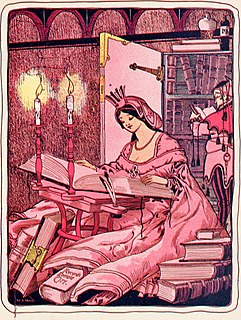 W
WGlinda, also known as the Good Witch of the South, is a fictional character created by L. Frank Baum in his Oz novels. She first appears in Baum's classic 1900 children's novel The Wonderful Wizard of Oz, and is the most powerful sorceress in the Land of Oz, ruler of the Quadling Country South of the Emerald City, and protector of Princess Ozma.
 W
WThe Hatter is a fictional character in Lewis Carroll's 1865 book Alice's Adventures in Wonderland and its 1871 sequel Through the Looking-Glass. He is very often referred to as the Mad Hatter, though this term was never used by Carroll. The phrase "mad as a hatter" pre-dates Carroll's works. The Hatter and the March Hare are referred to as "both mad" by the Cheshire Cat, in Alice's Adventures in Wonderland in the sixth chapter titled "Pig and Pepper".
 W
WDr. Henry Jekyll, nicknamed in some copies of the story, Harry Jekyll, and his alternative personality, Mr. Edward Hyde, is the central character of Robert Louis Stevenson's 1886 novella Strange Case of Dr Jekyll and Mr Hyde. In the story, he is a good friend of main protagonist Gabriel John Utterson and as well as a lover of Jekyll. Jekyll is a kind and respected English doctor who has repressed evil urges inside of him. In an attempt to hide this, he develops a type of serum that he believes will effectively mask his dark side. Instead, Jekyll transforms into Edward Hyde, the physical and mental manifestation of his evil personality. This process happens more regularly until Jekyll becomes unable to control when the transformations occur.
 W
WThe Knave of Hearts is a character from the 1865 book Alice's Adventures in Wonderland by Lewis Carroll.
 W
WThe Lady of the Lake is a name or a title used by several fairy-like enchantresses in the Matter of Britain, the body of medieval literature and mythology associated with the legend of King Arthur. They play pivotal roles in many stories, including providing Arthur with the sword Excalibur, eliminating Merlin, raising Lancelot after the death of his father, and helping to take the dying Arthur to Avalon. Different sorceresses known as the Lady of the Lake appear concurrently as separate characters in some versions of the legend since at least the Post-Vulgate Cycle and consequently the seminal Le Morte d'Arthur, with the latter describing them as a hierarchical group, while some texts also give this title to either Morgan or her sister.
 W
W"Little Red Riding Hood" is a European fairy tale about a young girl and a Big Bad Wolf. Its origins can be traced back to the 10th century to several European folk tales, including one from Italy called The False Grandmother. The best known version was written by Charles Perrault.
 W
WThe Lost Boys are characters from J. M. Barrie's 1904 play Peter Pan, or The Boy Who Wouldn't Grow Up and later adaptations and extensions to the story. They are boys "who fall out of their prams when the nurse is looking the other way and if they are not claimed in seven days, they are sent far away to the Neverland," where Peter Pan is their captain.
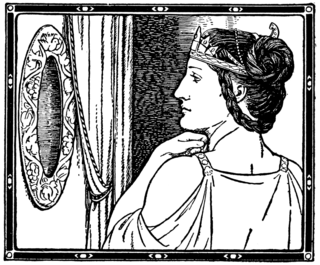 W
WThe Magic Mirror is a mystical object that is featured in the story of Snow White, depicted as either a hand mirror or a wall-mounted mirror.
 W
WCaptain Nemo is a fictional character created by the French novelist Jules Verne (1828–1905). Nemo appears in two of Verne's science-fiction classics, Twenty Thousand Leagues Under the Seas (1870) and The Mysterious Island (1875). He also makes a cameo appearance in a play on which Verne may have collaborated, Journey Through the Impossible (1882).
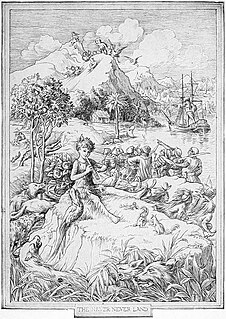 W
WPeter Pan is a fictional character created by Scottish novelist and playwright J. M. Barrie. A free-spirited and mischievous young boy who can fly and never grows up, Peter Pan spends his never-ending childhood having adventures on the mythical island of Neverland as the leader of the Lost Boys, interacting with fairies, pirates, mermaids, Native Americans, and occasionally ordinary children from the world outside Neverland.
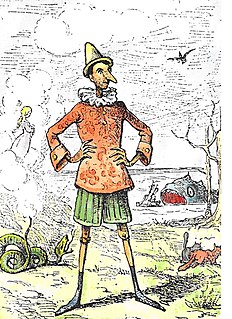 W
WPinocchio is a fictional character and the protagonist of the children's novel The Adventures of Pinocchio (1883) by Italian writer Carlo Collodi of Florence, Tuscany. Pinocchio was carved by a woodcarver named Geppetto in a Tuscan village. He was created as a wooden puppet but he dreams of becoming a real boy. He is notably characterized for his frequent tendency to lie, which causes his nose to grow.
 W
WThe Queen of Hearts is a fictional character from the 1865 book Alice's Adventures in Wonderland by Lewis Carroll. She is a foul-tempered monarch whom Carroll himself describes as "a blind fury", and who is quick to give death sentences at the slightest offense. One of her most famous lines is the oft-repeated "Off with his/her head!" / "Off with their heads!"
 W
WNurse Ratched is a fictional character and the main antagonist of One Flew Over the Cuckoo's Nest, first featured in Ken Kesey's 1962 novel as well as the 1975 film adaptation. A cold, heartless tyrant, Nurse Ratched has become the stereotype of the nurse as a battleaxe. She has also become a popular metaphor for the corrupting influence of institutional power and authority in bureaucracies such as the psychiatric treatment center in which the novel is set.
 W
WThe Red Queen is a fictional character in Lewis Carroll's fantasy 1871 novel Through the Looking-Glass. She is often confused with the Queen of Hearts from the previous book Alice's Adventures in Wonderland (1865), although the two are very different.
 W
WThe Scarecrow is a character in the fictional Land of Oz created by American author L. Frank Baum and illustrator W.W. Denslow. In his first appearance, the Scarecrow reveals that he lacks a brain and desires above all else to have one. In reality, he is only two days old and merely naïve. Throughout the course of the novel, he proves to have the brains he seeks and is later recognized as "the wisest man in all of Oz," although he continues to credit the Wizard for them. He is, however, wise enough to know his own limitations and all too happy to hand the rulership of Oz, passed to him by the Wizard, to Princess Ozma, and become one of her trusted advisors, though he typically spends more time having fun than advising.
 W
WThe Seven Dwarfs are a group of seven fictional dwarfs each with an age above 100 years old that appear in the fairy tale Snow White and others.
 W
WMr. Smee is a fictional character who serves as Captain Hook's boatswain in J. M. Barrie's 1904 play Peter Pan, or the Boy Who Wouldn't Grow Up and 1911 novel Peter and Wendy.
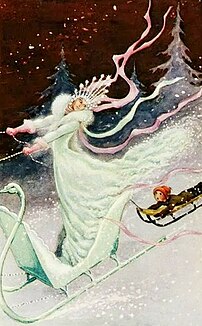 W
W"The Snow Queen" is an original fairy tale by Danish author Hans Christian Andersen. It was first published 21 December 1844 in New Fairy Tales. First Volume. Second Collection. 1845. The story centres on the struggle between good and evil as experienced by Gerda and her friend, Kai.
 W
WEmma Swan is a fictional character in ABC's television series Once Upon a Time. She is portrayed by Jennifer Morrison as an adult, by Abby Ross as a teenager, and by Mckenna Grace as a child. Emma first appeared in the series' pilot as a bail bond agent in Boston, Massachusetts, until she meets her biological son Henry, whom she gave up for adoption 10 years before. She learns she is the daughter of Snow White and Prince Charming who gave her up so she wouldn't die at the hands of Regina Mills, also known as the Evil Queen. Henry urges Emma to go to the town of Storybrooke, Maine, to break a curse enacted by the Evil Queen and to restore the fairy tale characters' happy endings. After the first season her role had more or less decreased in primary focus.
 W
WTiger Lily is a fictional character in J. M. Barrie's 1904 play Peter Pan, or The Boy Who Wouldn't Grow Up, his 1911 novel Peter and Wendy, and their various adaptations.
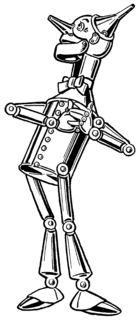 W
WNick Chopper, the Tin Woodman, also known as the Tin Man or—mistakenly—the "Tin Woodsman," is a character in the fictional Land of Oz created by American author L. Frank Baum. Baum's Tin Woodman first appeared in his classic 1900 book The Wonderful Wizard of Oz and reappeared in many other subsequent Oz books in the series. In late 19th-century America, men made out of various tin pieces were used in advertising and political cartoons. Baum, who was editing a magazine on decorating shop windows when he wrote The Wonderful Wizard of Oz, was reportedly inspired to invent the Tin Woodman by a figure he had built out of metal parts for a shop display.
 W
WTinker Bell is a fictional character from J. M. Barrie's 1904 play Peter Pan and its 1911 novelisation Peter and Wendy. She has appeared in a variety of film and television adaptations of the Peter Pan stories, in particular the 1953 animated Walt Disney picture Peter Pan. She also appears in the official 2006 sequel Peter Pan in Scarlet by Geraldine McCaughrean commissioned by Great Ormond Street Hospital as well as the "Peter and the Starcatchers" book series by Ridley Pearson and Dave Barry.
 W
WCruella de Vil is a fictional character created by English author Dodie Smith as the main antagonist of her 1956 novel The Hundred and One Dalmatians. A pampered and glamorous London heiress, the character appears in Walt Disney Pictures' 1961 animated adaptation of the novel, 101 Dalmatians, in which she is voiced by Betty Lou Gerson; in Disney's 1996 live-action 101 Dalmatians, in which she is portrayed by Glenn Close; and in many other Disney-produced sequels and spin-offs.
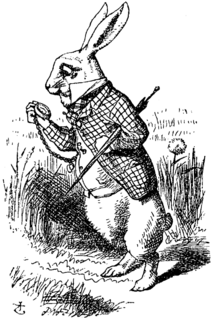 W
WThe White Rabbit is a fictional character in Lewis Carroll's 1865 book Alice's Adventures in Wonderland. He appears at the very beginning of the book, in chapter one, wearing a waistcoat, and muttering "Oh dear! Oh dear! I shall be too late!" Alice follows him down the rabbit hole into Wonderland. Alice encounters him again when he mistakes her for his housemaid Mary Ann and she becomes trapped in his house after growing too large. The Rabbit shows up again in the last few chapters, as a herald-like servant of the King and Queen of Hearts.
 W
WOscar Zoroaster Phadrig Isaac Norman Henkle Emmannuel Ambroise Diggs is a fictional character in the Land of Oz created by American author L. Frank Baum. The character was further popularized by a stage play and several movies, including the classic 1939 movie and the 2013 prequel adaptation.
 W
W